Km 4710-5750. Coast of Santa Cruz. (Part 2/2)
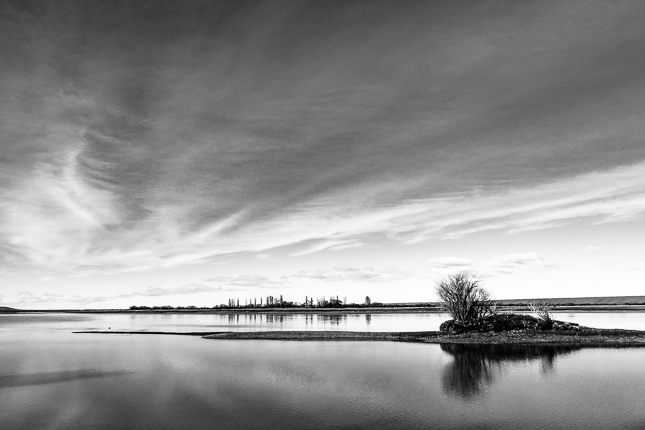 Santa Cruz River. Cmte. Luis Piedra Buena, Santa Cruz. 2017 © Leo Micieli.
Santa Cruz River. Cmte. Luis Piedra Buena, Santa Cruz. 2017 © Leo Micieli.
Km 5340-5750. Comandante Luis Piedra Buena - Puerto Santa Cruz - Río Gallegos. September 29th, 2017.
Every place on Earth has its old and remote past. Under the buildings, the wires, debit and credit, serial production, news and smog, there's also millions of years of wise evolution. In highly populated cities, with centuries of history behind, with high technologies, it demands an effort to imagine it. Yet, in Patagonia that seems to be closer, so close that one can literally touch it with the hands, walk over it and breathe it in the air.
European arrival produces displacements, struggles, disputes, settlements and towns are established, nationalities start to appear and, therefore, rivalries also appear. The old and remote soil covers by something strange: it's the modernity that comes from the Old World. Century after century and decade after decade new orders arise, new forms of organization, new actors who enter to scene with different behaviors than in other times. Nevertheless, Patagonia is extense, hugely extense, immeasurable.
The coast of Santa Cruz is conditioned by territorial, political and social shocks, even on our days. The first part of this post tells about the first times of the Conquest. The second one, about the recent times. The turmoils occurs through five centuries and the circumstances of life are defined in that lapse. Before all of that there are thousands and millions of years, and more. The eternal vs. the temporary. It's inevitable: the ancient and the remote last always constant in present time.
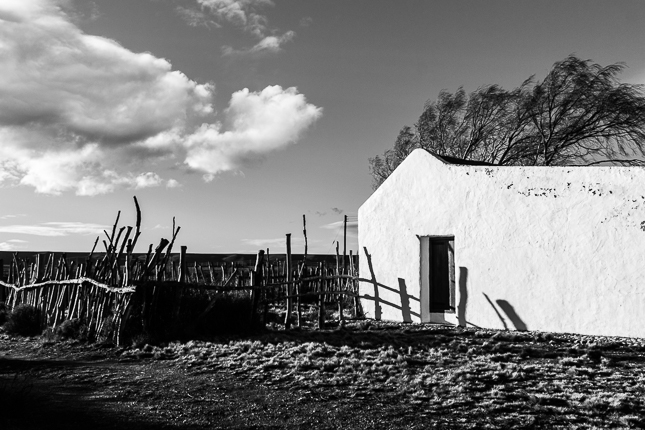 Residence of Commander Luis Piedra Buena in Pavón Island. Cmte. Luis Piedra Buena, Santa Cruz. 2017 © Leo Micieli
Residence of Commander Luis Piedra Buena in Pavón Island. Cmte. Luis Piedra Buena, Santa Cruz. 2017 © Leo Micieli
The town of Cmte. Luis Piedra Buena, though small, is very particular. Before my arrival many people tell me about its beauty, how clean it is and how the neighbors take care on the preservation of the place. It's an exception, something untypical. People sometimes exaggerate, but while in my stay here I confirm that everything I heard is true. Plus, it's located on the shores of the beautiful Santa Cruz River, that there's an island on those waters, Pavón Island, and that the art is everywhere on the streets and the surroundings.
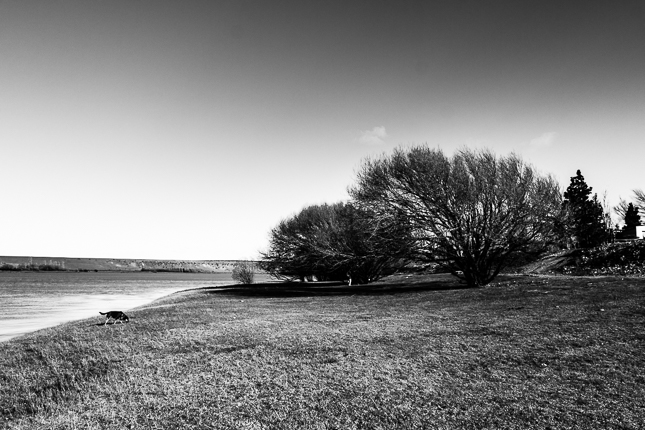 Cmte. Luis Piedra Buena, Santa Cruz. 2017 © Leo Micieli
Cmte. Luis Piedra Buena, Santa Cruz. 2017 © Leo Micieli
 Bus station. Cmte. Luis Piedra Buena, Santa Cruz. 2017 © Leo Micieli
Bus station. Cmte. Luis Piedra Buena, Santa Cruz. 2017 © Leo Micieli
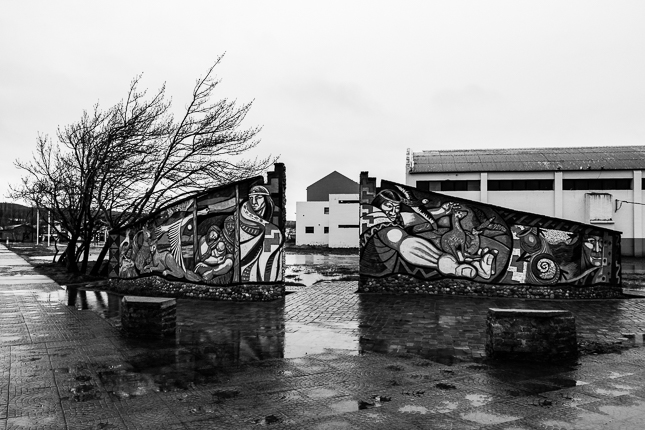 Cmte. Luis Piedra Buena, Santa Cruz. 2017 © Leo Micieli
Cmte. Luis Piedra Buena, Santa Cruz. 2017 © Leo Micieli
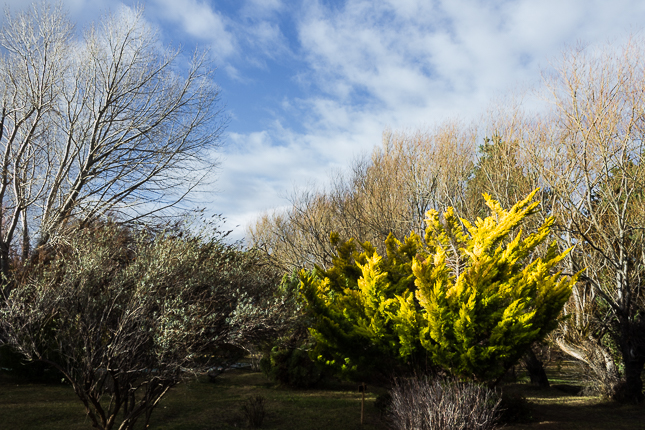 Botanical Garden. Cmte. Luis Piedra Buena, Santa Cruz. 2017 © Leo Micieli
Botanical Garden. Cmte. Luis Piedra Buena, Santa Cruz. 2017 © Leo Micieli
The people of this town themselves pick up plastic bags, bottles and papers from the streets and take them to bins. A different perception is perceived about ecology. There are murals, a theatre, a theme park about Patoruzú, Isidoro and all the characters of the comic created by Dante Quinterno, memorials, trees, gardens. It's one of those places in where the commitment of the people makes bloom not only what the place itself already has but the hope that it lasts and be extended to other parts.
Although it's not exempt from certain policies. Santa Cruz River is being nowadays center of disputes as there's intention of building two dams over its course. This would affect substantially the whole geography, the geological history and even its particular turquoise-colored water, besides the damage over several glaciers. It's a 383 km long river, feed by Andean glaciers, that ends into the Atlantic Ocean. On its course there's a whole ecological diversity and, back the beginning of this post, a remote and old activity, wiser and more intelligent than the construction of two walls interrupting the natural flow of the river.
Neighbors mobilize in the town, go to other cities to inform, they gather, they speak at schools, the conflict is on everyone's lips. But it's necessary a lot of people to refute the silent voices of those who act secretly.
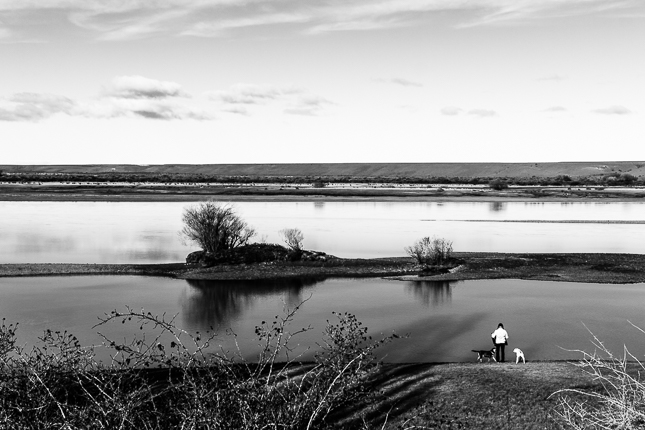 Santa Cruz River. Cmte. Luis Piedra Buena, Santa Cruz. 2017 © Leo Micieli
Santa Cruz River. Cmte. Luis Piedra Buena, Santa Cruz. 2017 © Leo Micieli
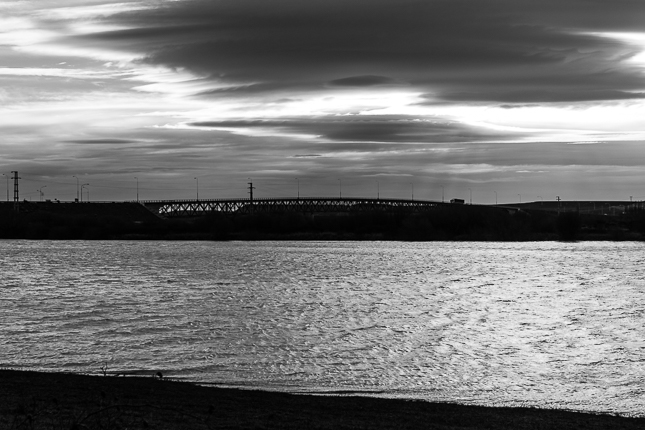 Santa Cruz River. Cmte. Luis Piedra Buena, Santa Cruz. 2017 © Leo Micieli
Santa Cruz River. Cmte. Luis Piedra Buena, Santa Cruz. 2017 © Leo Micieli
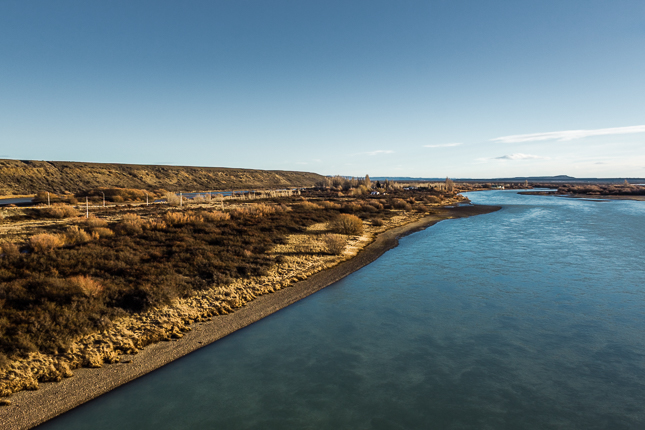 Pavón Island and Santa Cruz River. Cmte. Luis Piedra Buena, Santa Cruz. 2017 © Leo Micieli
Pavón Island and Santa Cruz River. Cmte. Luis Piedra Buena, Santa Cruz. 2017 © Leo Micieli
The airs in Piedra Buena are fresh in all senses and for several reasons. There's a big difference in relation to other towns of the Coast and even further parts of the territory, a sense of preservation and respect for environment and culture that would be great to repeat in other places, benefiting everyone. In spite of some disregard, the general intention is the opposite, to keep everything under good conditions.
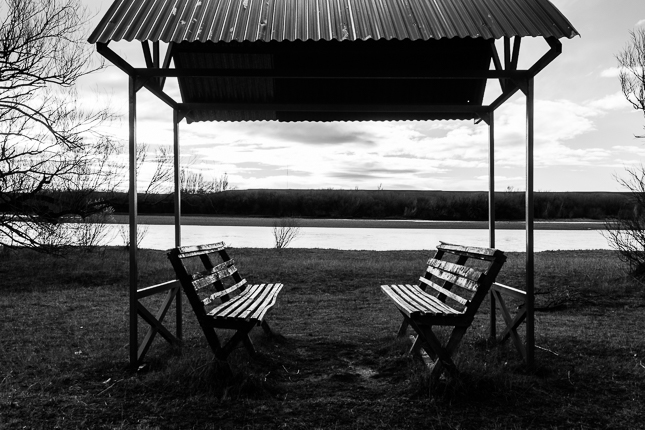 Pavón Island. Cmte. Luis Piedra Buena, Santa Cruz. 2017 © Leo Micieli
Pavón Island. Cmte. Luis Piedra Buena, Santa Cruz. 2017 © Leo Micieli
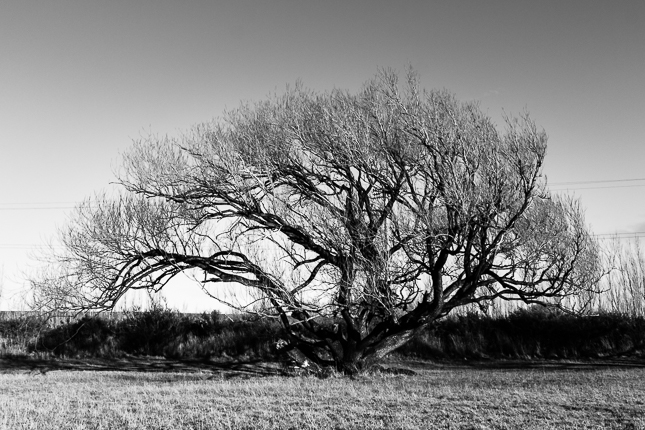 Pavón Island. Cmte. Luis Piedra Buena, Santa Cruz. 2017 © Leo Micieli
Pavón Island. Cmte. Luis Piedra Buena, Santa Cruz. 2017 © Leo Micieli
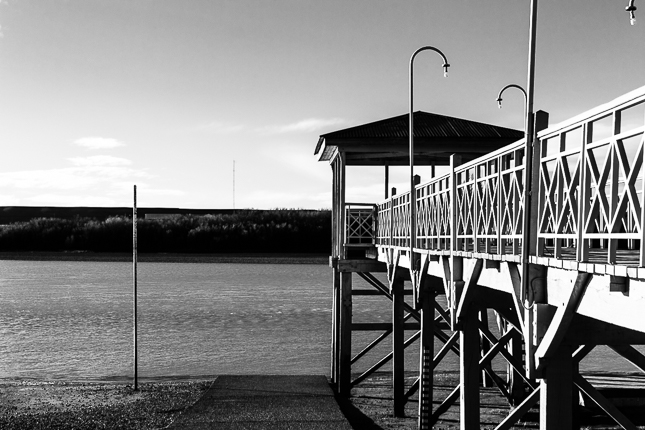 Pavón Island. Cmte. Luis Piedra Buena, Santa Cruz. 2017 © Leo Micieli
Pavón Island. Cmte. Luis Piedra Buena, Santa Cruz. 2017 © Leo Micieli
On the other side of the river, at 40 km, it's placed Puerto Santa Cruz. It's a town of about 5000 people and is also the old capital of the province until it was moved to Río Gallegos at the late XIX Century. It's located on the shores of the same river but it has a quite different physiognomy than Cmte. Piedra Buena.
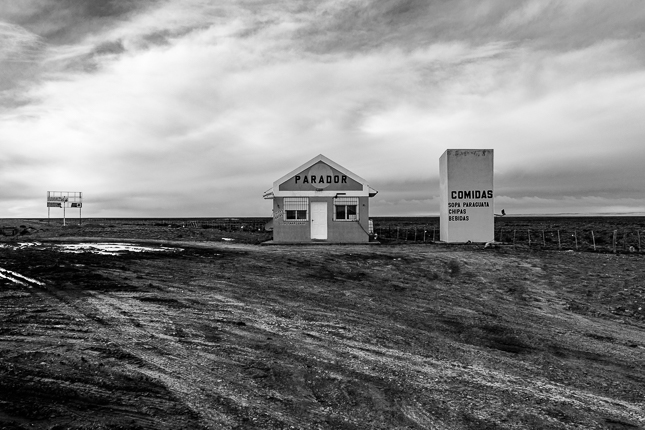 Entry to Puerto Santa Cruz. Santa Cruz. 2017 © Leo Micieli
Entry to Puerto Santa Cruz. Santa Cruz. 2017 © Leo Micieli
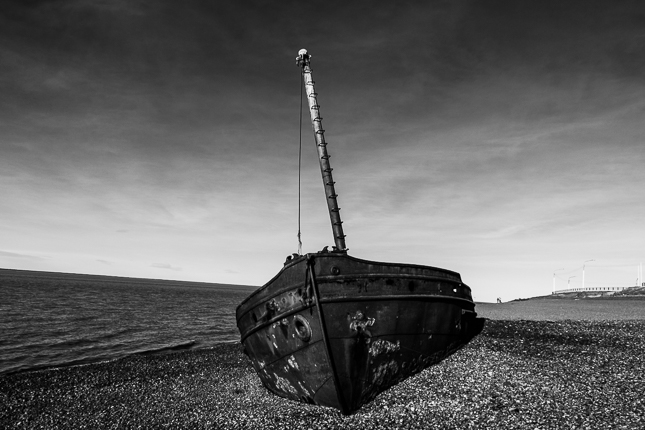 Puerto Santa Cruz. Santa Cruz. 2017 © Leo Micieli
Puerto Santa Cruz. Santa Cruz. 2017 © Leo Micieli
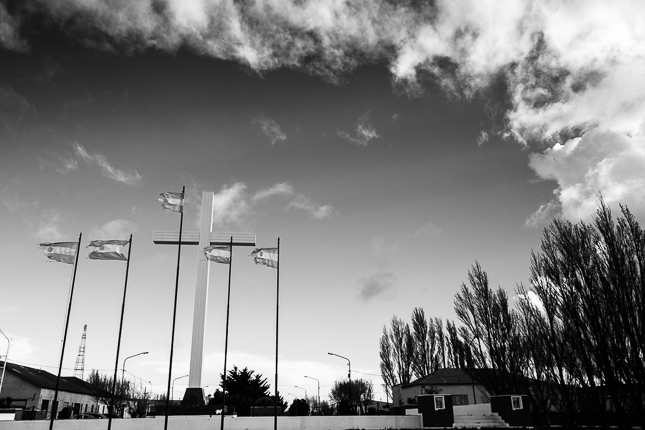 Puerto Santa Cruz. Santa Cruz. 2017 © Leo Micieli
Puerto Santa Cruz. Santa Cruz. 2017 © Leo Micieli
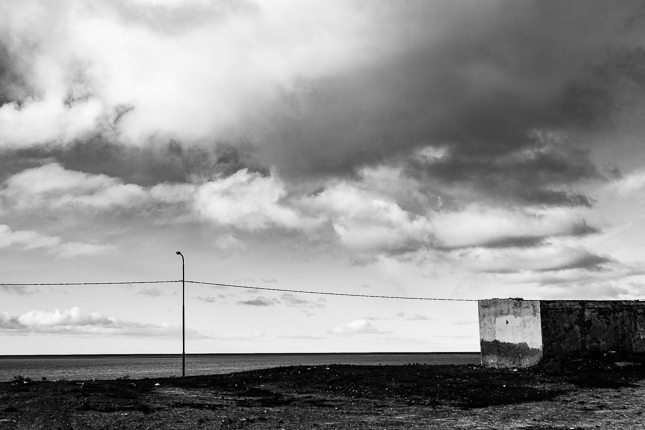 Puerto Santa Cruz. Santa Cruz. 2017 © Leo Micieli
Puerto Santa Cruz. Santa Cruz. 2017 © Leo Micieli
Different physiognomy but the same quietness. Low houses, calm streets, mild hills on the background. On the shore there are several abandoned boats that lay over little rocks. Some centuries ago, a ship sinks into the bottom of the river, the Nao Santiago, which belonged to the Magellanic Fleet. Mapuches and tehuelches communities gather in this place.
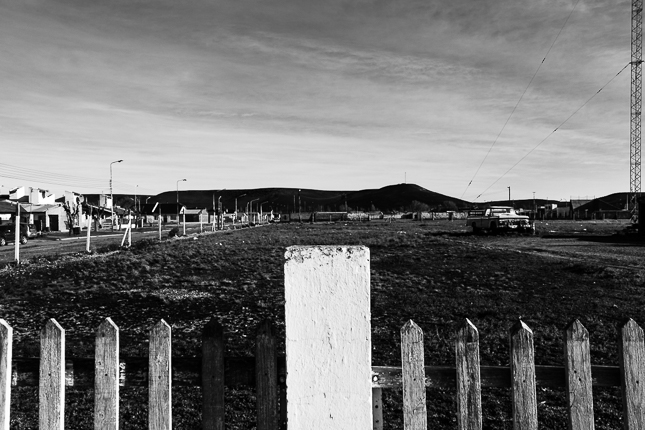 Puerto Santa Cruz. Santa Cruz. 2017 © Leo Micieli
Puerto Santa Cruz. Santa Cruz. 2017 © Leo Micieli
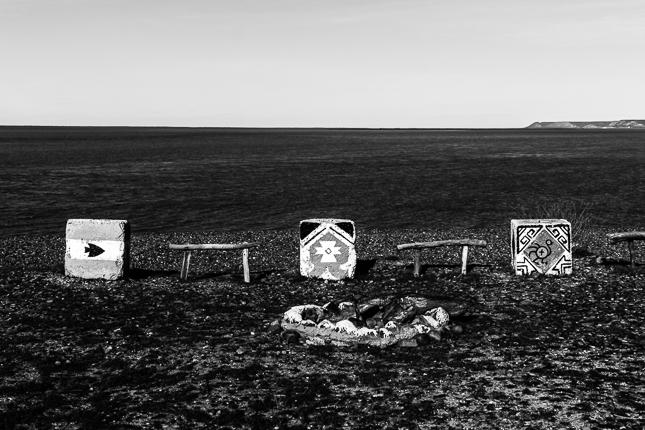 Puerto Santa Cruz. Santa Cruz. 2017 © Leo Micieli
Puerto Santa Cruz. Santa Cruz. 2017 © Leo Micieli
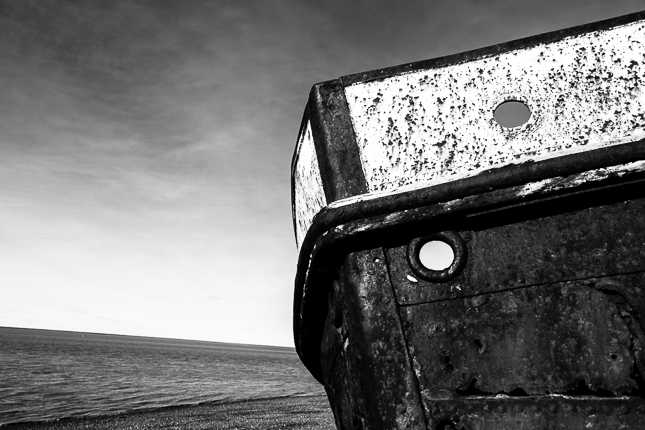 Puerto Santa Cruz. Santa Cruz. 2017 © Leo Micieli
Puerto Santa Cruz. Santa Cruz. 2017 © Leo Micieli
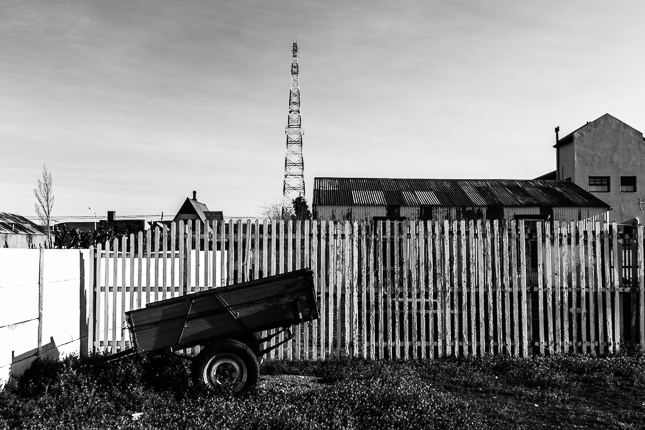 Puerto Santa Cruz. Santa Cruz. 2017 © Leo Micieli
Puerto Santa Cruz. Santa Cruz. 2017 © Leo Micieli
The move of capital from Puerto Santa Cruz to Río Gallegos more than a century ago has its reasons. One of them is strategic: it's necessary to defend sovereignty on the south of Santa Cruz River, an area still in dispute and with non-clear borders. The other one is romantic in nature: some say that the governor at that time is having a romance with a tehuelche woman that lives in Río Gallegos. Anyway, this move left the town out of the "benefits", if so can be called, and the dynamic that a capital produces. Yet, this doesn't seem to be a problem here but the opposite. It's a small place whose perimeter can be walked by foot in just a few hours. But people don't forget its past, they still calling the town 'Historical Capital of Santa Cruz'.
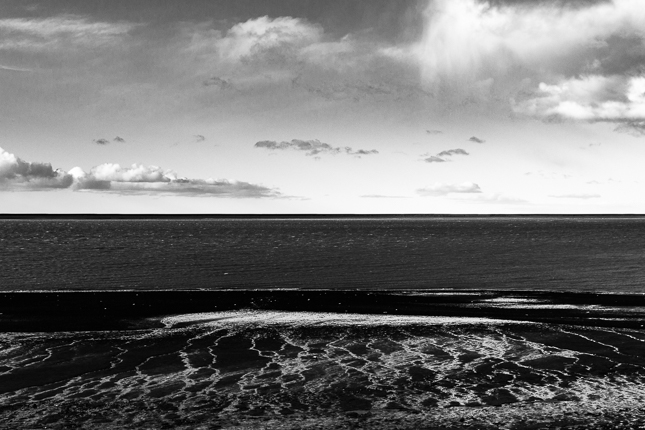 Puerto Santa Cruz. Santa Cruz. 2017 © Leo Micieli
Puerto Santa Cruz. Santa Cruz. 2017 © Leo Micieli
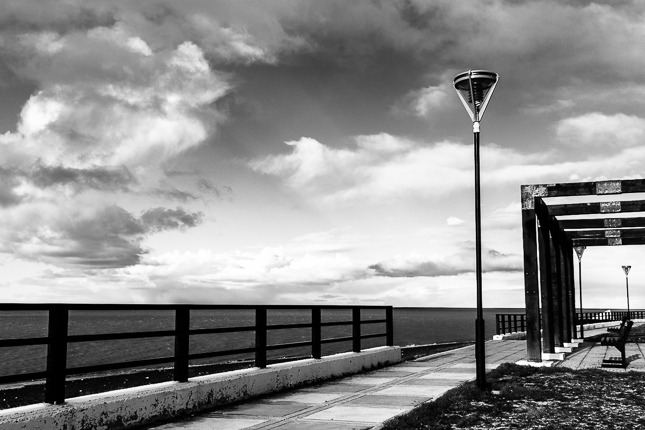 Puerto Santa Cruz. Santa Cruz. 2017 © Leo Micieli
Puerto Santa Cruz. Santa Cruz. 2017 © Leo Micieli
From the Historical Capital to the present one there are about 250 km along the extense Route 3. It's a constant on the Patagonian roads to see guanacos and choiques by the side, sometimes further and others closer, even on the very road. Car accidents are also a constant as these animals are wild and drivers sometimes don't stop in time. The number of guanacos is way much higher on these latitudes.
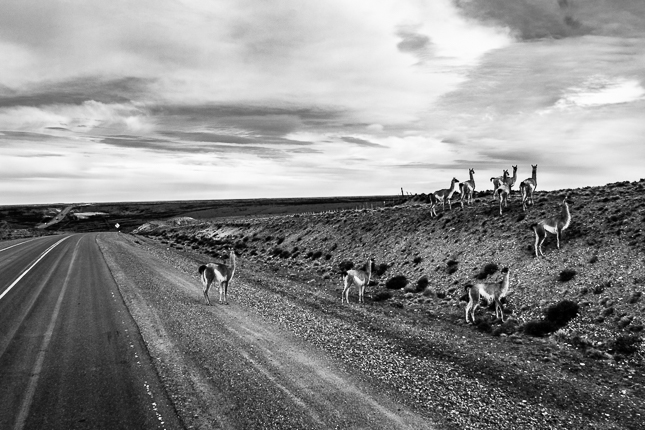 Guanacos over National Route 3. Santa Cruz. 2017 © Leo Micieli
Guanacos over National Route 3. Santa Cruz. 2017 © Leo Micieli
The panorama changes just a few kilometers before arriving to Río Gallegos. Coastal towns and locations and their calm airs are left behind. As it uses to happen in big cities or capitals, the rhythm is higher, the buildings grow in height, the urban layout extends its area, people tends to routine and inertia, the social gaps are more evident.
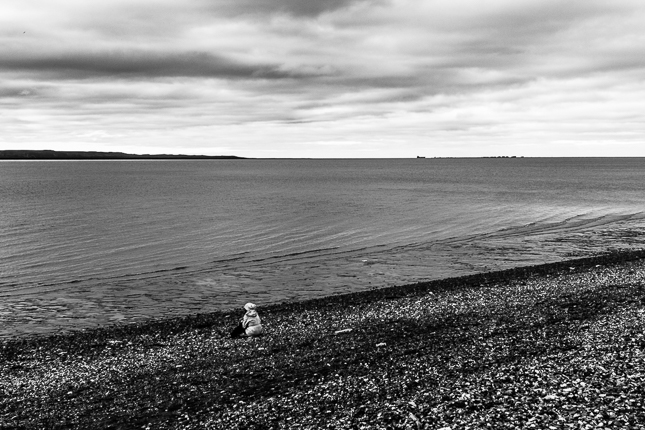 Río Gallegos. Santa Cruz. 2017 © Leo Micieli
Río Gallegos. Santa Cruz. 2017 © Leo Micieli
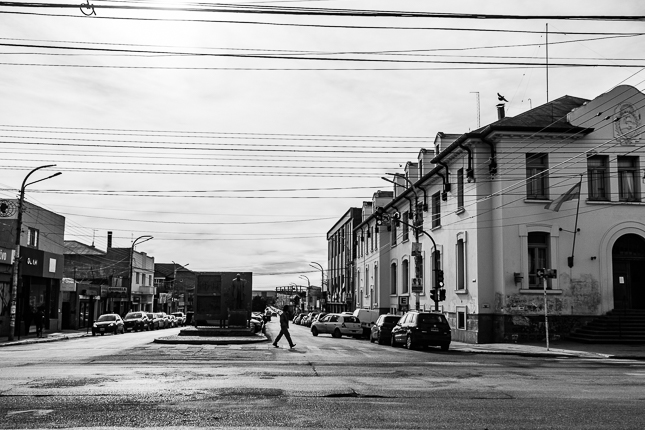 Río Gallegos. Santa Cruz. 2017 © Leo Micieli
Río Gallegos. Santa Cruz. 2017 © Leo Micieli
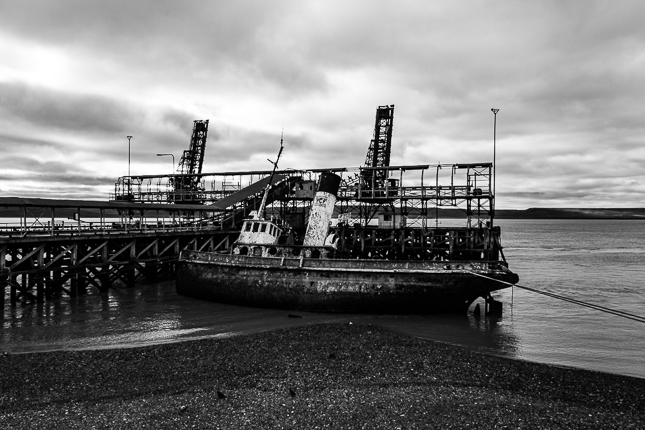 Former YCF dock and abandoned tugboat 'Enrique'. Río Gallegos. Santa Cruz. 2017 © Leo Micieli
Former YCF dock and abandoned tugboat 'Enrique'. Río Gallegos. Santa Cruz. 2017 © Leo Micieli
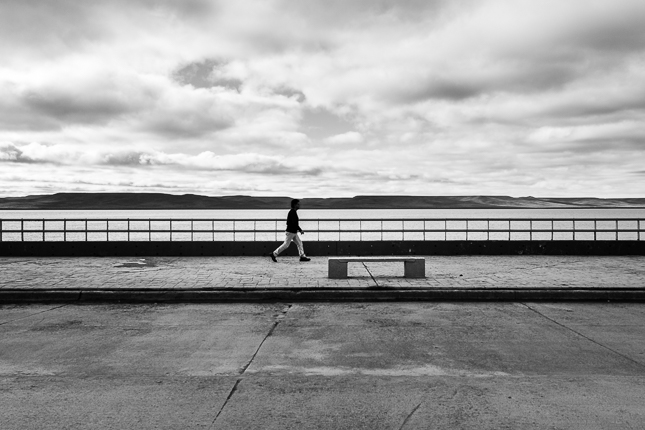 Río Gallegos. Santa Cruz. 2017 © Leo Micieli
Río Gallegos. Santa Cruz. 2017 © Leo Micieli
Río Gallegos is, besides the capital of a province, a city which for several and historical reasons concentrates an intense political and social activity. History tells about the workers strikes on 1920 and 1921 in where they are killed hundreds of workers, facts that were researched by Osvaldo Bayer. Afterwards it was released one of the most famous argentinian movies: Rebellion in Patagonia. Few years after becoming a capital, Río Gallegos start to have a turbulent atmosphere.
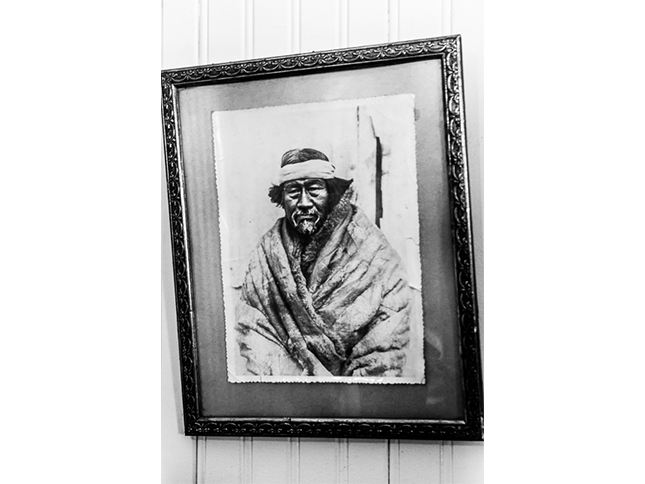 Capipe, the last of the tehuelches. Pioneers Museum. Río Gallegos, Santa Cruz. 2017 © Leo Micieli
Capipe, the last of the tehuelches. Pioneers Museum. Río Gallegos, Santa Cruz. 2017 © Leo Micieli
 Río Gallegos. Santa Cruz. 2017 © Leo Micieli
Río Gallegos. Santa Cruz. 2017 © Leo Micieli
 Río Gallegos. Santa Cruz. 2017 © Leo Micieli
Río Gallegos. Santa Cruz. 2017 © Leo Micieli
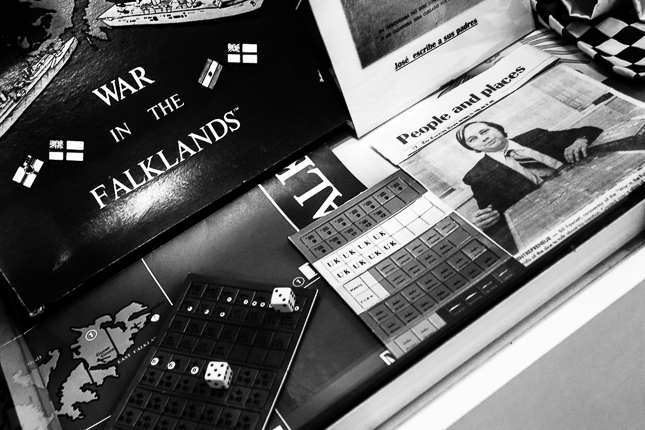 Table game inspired on the conflict of Malvinas. War Museum 'Malvinas Argentinas'. Río Gallegos, Santa Cruz. 2017 © Leo Micieli
Table game inspired on the conflict of Malvinas. War Museum 'Malvinas Argentinas'. Río Gallegos, Santa Cruz. 2017 © Leo Micieli
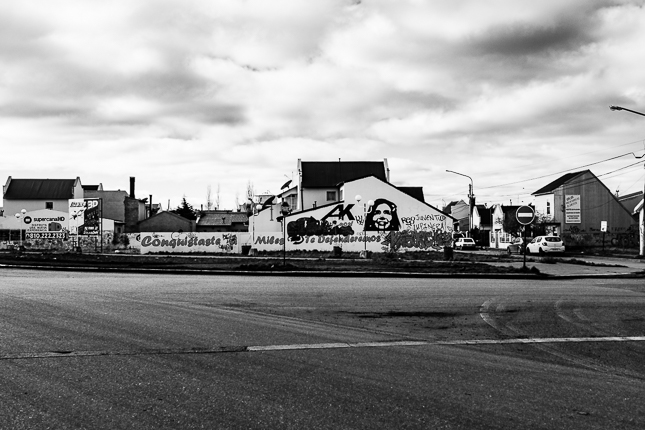 Río Gallegos. Santa Cruz. 2017 © Leo Micieli
Río Gallegos. Santa Cruz. 2017 © Leo Micieli
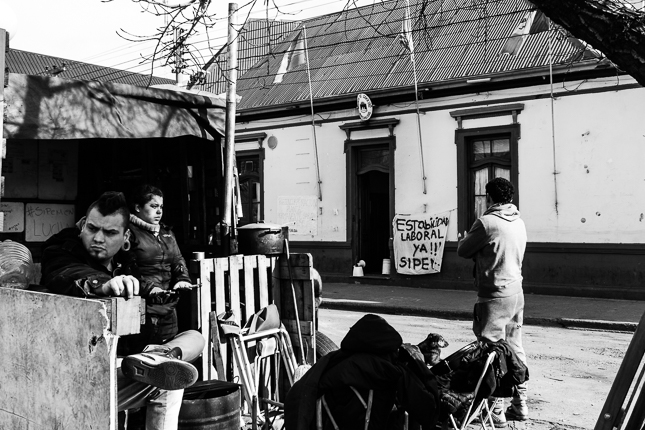 Protests in front of the Municipality. Río Gallegos, Santa Cruz. 2017 © Leo Micieli
Protests in front of the Municipality. Río Gallegos, Santa Cruz. 2017 © Leo Micieli
Along all this trip, in this part and previous parts, some behaviors are repeated and circumstances indicate that something is not going too well. Patagonia is not exempt from the bad habits that harm the territory, the people and the culture. It's huge and rich, it's a hard soil in which living, it's a place in where the modern world comes later. Fortunately, this makes the damage not to be as big as in other parts of the World in where it's irreversible. It's still an ancient land, remote and wise, because its geography, history and prehistory shapes it like this. But it's disturbing how polluted the soil and water are, how deteriorated the ecosystem is, the abuse of the renewable and non-renewable resources, the social gaps due to policies from any political sign, the money that buys whole regions to the detriment of what has always inhabitated here.
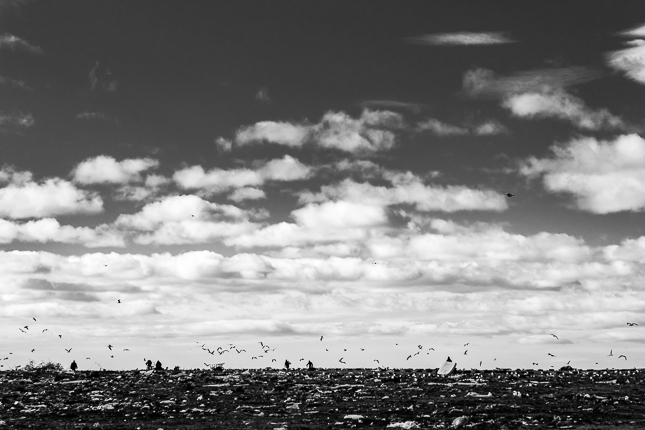 Río Gallegos. Santa Cruz. 2017 © Leo Micieli
Río Gallegos. Santa Cruz. 2017 © Leo Micieli
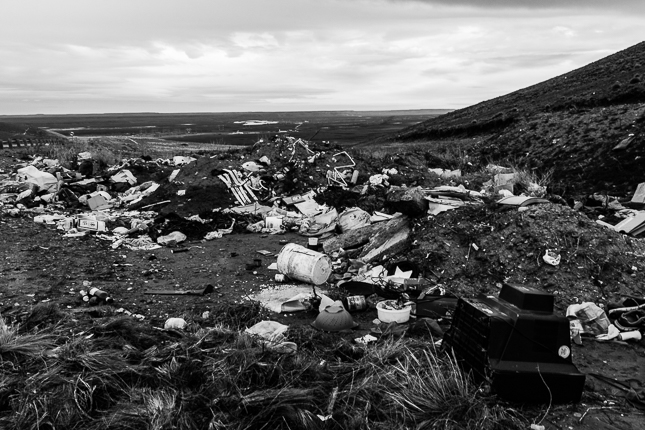 Cmte. Luis Piedra Buena. Santa Cruz. 2017 © Leo Micieli
Cmte. Luis Piedra Buena. Santa Cruz. 2017 © Leo Micieli
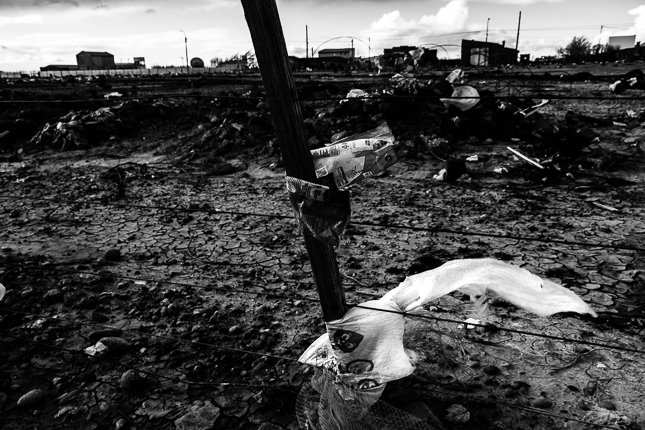 Puerto Santa Cruz. Santa Cruz. 2017 © Leo Micieli
Puerto Santa Cruz. Santa Cruz. 2017 © Leo Micieli
The tragic, rebel, abused Patagonia.
The magical, ancestral, generous Patagonia.
The Patagonia that lies below the layers of progress,
and rises above it.
The one that stands aside from politics, economics,
from the meanness,
and offers serene contemplation.
It's this Patagonia with all it has,
with all that is taken away from it,
the total sum of all.
It's silence and solitude,
it's the question that innerly moves,
it's the path stepless.
It's what always has been, not what we do with it.
It's the Land of Giants,
and Giants are still living.
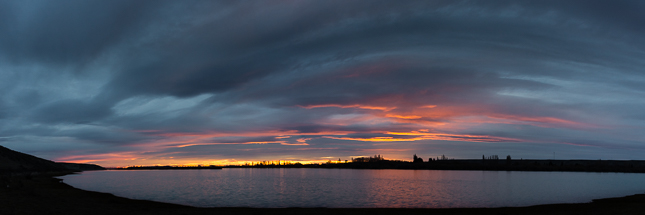 Santa Cruz River. Cmte. Luis Piedra Buena, Santa Cruz. 2017 © Leo Micieli
Santa Cruz River. Cmte. Luis Piedra Buena, Santa Cruz. 2017 © Leo Micieli
julio (03/11/2017)
Leo , te repito para esta segunda parte el comentario anterior : Leo, al leer tus relatos de las experiencias vividas ,da la sensación de estar recorriendo la PATAGONIA de repente en el lomo de un caballo o en un vehículo motorizado y también desde las alturas mirando con la vista aguda de un águila , acompañado por un guía enamorado de esos parajes y que ubica al lector perfectamente en cada escenario y además contando parte de la historia de cada sitio que muchos ignoramos .
Km 30-100 - First impressions in Patagonian Coast
Km 100-410 - The sea
Km 410-3650 - 'Stop, look, listen'. (Part 1/2)
Km 410-3650 - 'Stop, look, listen'. (Part 2/2)
Km 3650-4190. Puerto Madryn - Puerto Pirámides - Bird Island
Km 4190-4710. Trelew-Comodoro Rivadavia-Caleta Olivia
Km 4710-5750. Coast of Santa Cruz. (Part 1/2)
Km 4710-5750. Coast of Santa Cruz. (Part 2/2)
Km 5750-6960. Tierra del Fuego
Km 6960-8800. West of Santa Cruz.
Km 8800-9670. San Jorge Gulf Basin.
Leave a Reply